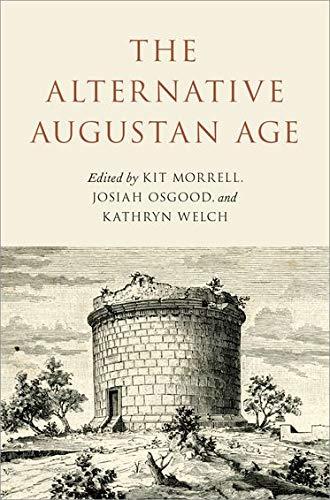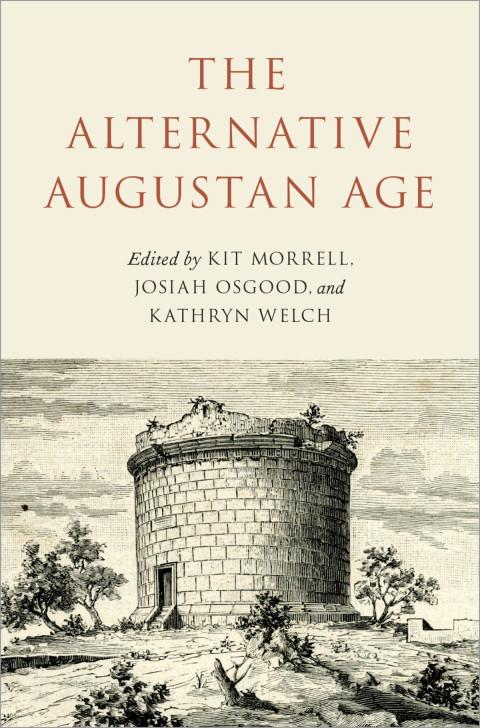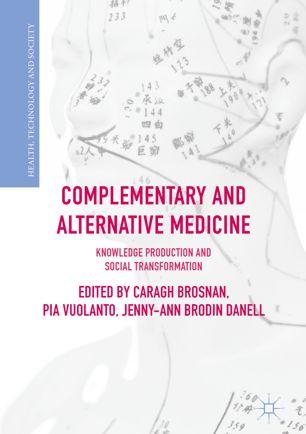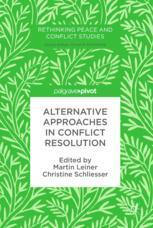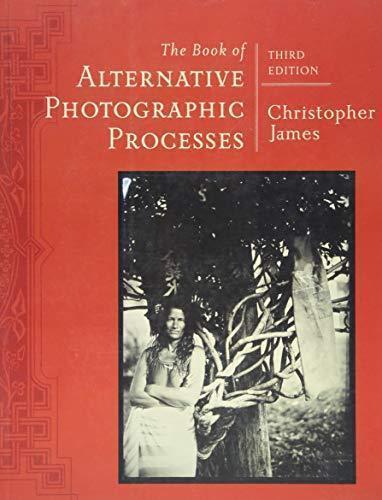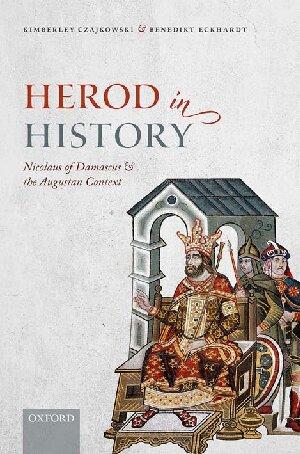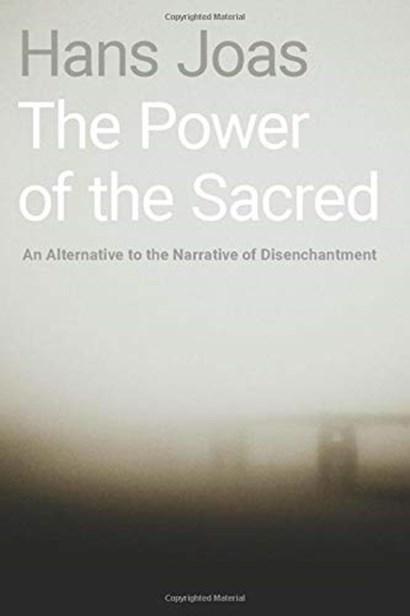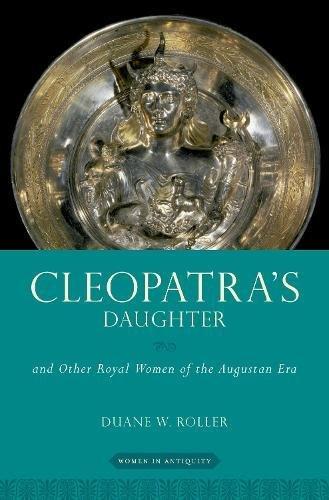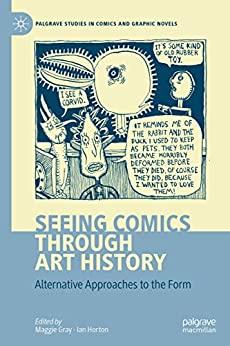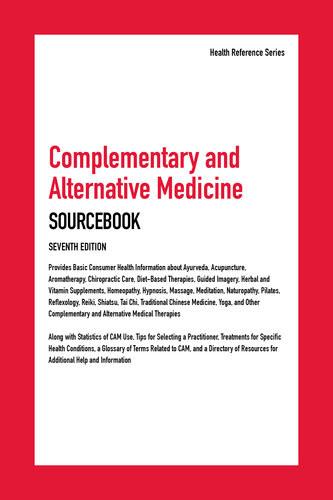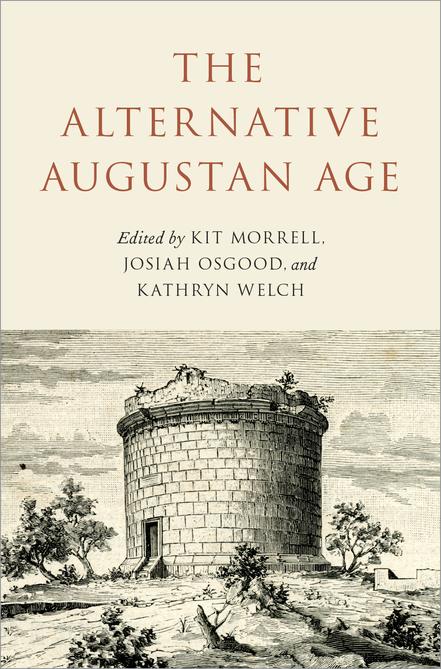The Alternative Augustan Age
Edited by Kit Morrell, Josiah Osgood, and Kathryn Welch
Oxford University Press is a department of the University of Oxford. It furthers the University’s objective of excellence in research, scholarship, and education by publishing worldwide. Oxford is a registered trade mark of Oxford University Press in the UK and certain other countries.
Published in the United States of America by Oxford University Press 198 Madison Avenue, New York, NY 10016, United States of America.
© Oxford University Press 2019
All rights reserved. No part of this publication may be reproduced, stored in a retrieval system, or transmitted, in any form or by any means, without the prior permission in writing of Oxford University Press, or as expressly permitted by law, by license, or under terms agreed with the appropriate reproduction rights organization. Inquiries concerning reproduction outside the scope of the above should be sent to the Rights Department, Oxford University Press, at the address above.
You must not circulate this work in any other form and you must impose this same condition on any acquirer.
CIP data is on file at the Library of Congress
ISBN 978–0–19–090140–0
1 3 5 7 9 8 6 4 2
Printed by Sheridan Books, Inc., United States of America
For Anton Powell
List of Figures xi
Preface xiii
List of Contributors xv
1. The Alternative Augustan Age 1
Hannah Mitchell, Kit Morrell, Josiah Osgood, and Kathryn Welch
2. Augustus as Magpie 12
Kit Morrell
3. Hopes and Aspirations: Res Publica, Leges et Iura, and Alternatives at Rome 27
Eleanor Cowan
4. Rebuilding Romulus’ Senate: The Lectio Senatus of 18 bce 46
Andrew Pettinger
5. The Good Wife: Fate, Fortune, and Familia in Augustan Rome 63
Bronwyn Hopwood
6. At Magnus Caesar, and Yet! Social Resistance against Augustan Legislation 78
Werner Eck
7. C. Asinius Pollio and the Politics of Cosmopolitanism 96 Joel Allen
8. For Rome or for Augustus? Triumphs beyond the Imperial Family in the PostCivil-War Period 113
Carsten Hjort Lange
9. Egyptian Victories: The Praefectus Aegypti and the Presentation of Military Success in the Age of Augustus 130
Wolfgang Havener
10. African Alternatives 147
Josiah Osgood
11. The Reputation of L. Munatius Plancus and the Idea of “Serving the Times” 163
Hannah Mitchell
12. How Do You Solve a Problem Like Marcus Agrippa? 182
James Tan
13. Acting “Republican” under Augustus: The Coin Types of the Gens Antistia 199
Megan Goldman-Petri
14. Saecular Discourse: Qualitative Periodization in First-Century-bce Rome 216
Paul Hay
15. Maecenas and the Augustan Poets: The Background of a Cultural Ambition 231
Philippe Le Doze
16. Gauls on Top: Provincials Ruling Rome on the Shield of Aeneas 247
Geraldine Herbert-Brown
17. The Rise of the Centumviral Court in the Augustan Age: An Alternative Arena of Aristocratic Competition 266
Matthew Roller
18. Shields of Virtue(s) 282
Kathryn Welch
19. The Popular Reception of Augustus and the Self-Infantilization of Rome’s Citizenry 305
Tom Hillard
20. Inventing the Imperial Senate 325
Amy Russell
Bibliography 343
Index 381
Figures
3.1 Aureus 1995,0401.1. 30
9.1 The trilingual stele from Philae, 29 bce. 135
9.2 Relief from the temple of Dendur (south wall of the porch) depicting Augustus burning incense in front of the deified Pedesi and Pihor. 144
10.1 RRC 461.1. The head of Africa on the coinage of Q. Metellus Scipio imperator. 149
10.2 RRC 509.4. The head of Africa on the coinage of Q. Cornificius imperator. 152
12.1 Marble Agrippa (Venezia Museo Archaeologico inv. 11). 187
12.2 RIC Aug. 14. Agrippa with corona navalis and corona muralis. 193
12.3 Marble rostrum with Agrippa crowned by Victoria. 194
13.1 RIC 12 (Aug) 363. Denarius of C. Antistius Vetus. 205
13.2 RRC 29.1. Gold stater with oath-taking scene. 207
13.3 RIC 12 (Aug) 369. Aureus of C. Antistius Vetus. 209
13.4 RIC 12 (Aug) 368. Denarius of C. Antistius Vetus. 213
13.5 RIC 12 (Aug) 410. Denarius of C. Antistius Reginus. 214
13.6 RIC 12 (Aug) 411. Aureus of C. Antistius Reginus. 214
18.1 Frieze with winged victories, the so-called Monument of Bocchus 286
18.2 The clupeus from Arles. Musee de l’Arles antique inv. 51–195. 288
18.3 CIL 6.82, 40365. Fragment of the clupeus from the Mausoleum of Augustus. 289
18.4 Reconstruction of the Potentia Altar. 290
18.5 Reconstruction of the inscription on the altar at Potentia. 291
18.6 RIC 12 (Aug) 42b. Coin displaying the Cl.V. c. 19–18 bce. 297
18.7 RIC 12 (Aug) 52a. Coin displaying the Cl.V. with laurel bushes c. 19–18 bce. 297
18.8 RIC 12 (Aug) 47a. Coin displaying the Cl.V carried by Victory c. 19–18 bce 298
18.9 RIC 12 (Aug) 79a. Cl.V. with the corona civica and the slogan ob civis servatos c. 19–18 bce. 298
18.10 RIC 12 (Aug) 415. Obv: Head of Augustus. Rev: Augustus and Divus Julius with the clupeus with a wreath. L. Lentulus Flamen Martialis. 299
18.11 Clupeus and corona civica from Ostia (Squarciapino 1982). 300
18.12 Reconstructed temple of Rome and Augustus. 301
18.13 Side B from the altar of the Vicus Sandaliarius. 302
18.14 The Belvedere Altar. 303
Preface
Along with many centers of Roman Studies throughout the world, the University of Sydney held a conference in 2014 to commemorate the bimillennium of the death of Augustus. The conference organizers, Eleanor Cowan, Geraldine Herbert-Brown, Andrew Pettinger, and I, stated our intention not to publish the papers from the beginning. We wanted to create space for free discussion and new ideas unimpeded by an overarching theme, the need for cohesion, and a deadline for submitting papers that a conference volume requires.
Nevertheless, it was clear that the occasion revealed an important trend in scholarship that called out for further investigation. What would the “Age of Augustus” look like if one turned one’s gaze away from the single important individual who receives most of the attention and onto the other players of the period? We wrestled to find a way to capture, collect, and promote some answers to this question. Then, in late July 2015, the Vergilian Society of America advertised a new conference series, the Symposium Campanum, that was to begin in 2016. Within a day of that notice arriving in my inbox, I decided to mount a second international conference in which all papers would examine the Augustan period but no paper would center upon Augustus himself. Within a week, Josiah Osgood had enthusiastically accepted my invitation to co-convene the project. The prospect of The Alternative Augustan Age as conference and volume began to take shape.
To our delight, we won the bid to host the first Symposium Campanum and our call for papers led to a flood of excellent proposals, revealing the extent to which the topic was ripe for discussion. After some tough decisions, the program was decided, and our conference took place at the Villa Virgiliana, Cuma, October 13–16, 2016. At the end of four wonderful days of papers, it was very clear to us that publication of the conference was not just a possibility. It would be a task well worth the effort.
During the conference, we invited Kit Morrell to join the editorial team. Her knowledge, hard work, and talent for engaging constructively with every contributor have played an important part in the brisk progress of the project from successful conference to publication. Hannah Mitchell’s unique understanding of the topic was indispensable to constructing the first chapter and in deciding the order of papers. Every author, however, has assisted us greatly in bringing the project together in good time, not only by delivering their revised papers in a timely fashion, but in responding to requests for further consideration of their arguments and by reading and incorporating the views of other contributors. This has been a team effort from beginning to end.
It remains to thank Richard Thomas and the Vergilian society for sponsoring the conference, the staff of the Villa Virgiliana for their hospitality, and the Loeb Classical Foundation, the University of Sydney, and Georgetown University for providing the bulk of the funding. We are also grateful to Harriet Flower, Karl Galinsky, and Nicholas Purcell for supporting our funding applications. Every participant who attended the conference in 2016 made a lively, collegial, and valuable contribution to the experience and we are sorry that for various reasons they could not all be represented in this collection. Stefan Vranka from Oxford University Press has been a wonderful commissioning editor who has offered unstinting support from the moment we approached the Press as a potential publisher. Thanks are due also to the readers for the Press who were both enthusiastic and perceptive in their critiques, to the many people who have read and commented on individual papers, to Mary Jane Cuyler for preparing the index, and to our families, friends, and colleagues who have supported us in this endeavor, as they always have. Finally, it is with great pleasure and thanks that the editors dedicate this book to Anton Powell, whose own hunt for an alternative narrative of Roman civil wars and the onset of the principate has emboldened us all.
Kathryn Welch September 2018
Contributors
Joel Allen, Associate Professor of History and Classics, Queens College and the Graduate Center, The City University of New York (USA)
Eleanor Cowan, Lecturer in Ancient History, Department of Classics and Ancient History, University of Sydney (Australia)
Werner Eck, Professor Emeritus of Ancient History, University of Cologne (Germany)
Megan Goldman-Petri, Graduate Student in Classical Art and Archaeology, Princeton University (USA)
Wolfgang Havener, Assistant Professor, Seminar for Ancient History and Epigraphy, University of Heidelberg (Germany)
Paul Hay, Visiting Assistant Professor of Classics, Case Western Reserve University (USA)
Geraldine Herbert-Brown, Honorary Associate, Department of Classics and Ancient History, University of Sydney (Australia); and Associate Member, Corpus Christi College, Oxford (UK)
Tom Hillard, Honorary Associate Professor of Ancient History, Macquarie University (Australia)
Carsten Hjort Lange, Associate Professor of Ancient History, Aalborg University (Denmark)
Contributors
Bronwyn Hopwood, Senior Lecturer in Roman History and Curator of the Museum of Antiquities, University of New England (Australia)
Philippe Le Doze, Maître de conférences en Histoire ancienne, Université de Rennes 2 (France)
Hannah Mitchell, Teaching Fellow in Roman History, University of Warwick (UK)
Kit Morrell, Honorary Associate, Department of Classics and Ancient History, University of Sydney (Australia); and Postdoctoral Researcher, Department of History, European Studies, and Religious Studies, University of Amsterdam (Netherlands)
Josiah Osgood, Professor of Classics, Georgetown University (USA)
Andrew Pettinger, Honorary Associate, Department of Classics and Ancient History, University of Sydney (Australia)
Matthew Roller, Professor of Classics, Johns Hopkins University (USA)
Amy Russell, Associate Professor of Classics and Ancient History, Durham University (UK)
James Tan, Lecturer in Ancient History and Classics, Department of Classics and Ancient History, University of Sydney (Australia)
Kathryn Welch, Associate Professor, Department of Classics and Ancient History, University of Sydney (Australia)
The Alternative Augustan Age
HANNAH MITCHELL, KIT MORRELL, JOSIAH OSGOOD, AND KATHRYN WELCH
The Augustan Age” is a dominant term in historical, literary, and cultural analysis, not to mention teaching. It is enshrined in studies such as Werner Eck’s The Age of Augustus (2003; originally Augustus und seine Zeit 1998), as well as edited collections including Karl Galinsky’s Cambridge Companion to the Age of Augustus (2005).1 The magnetism of the term in English scholarship in particular is reflected in the fact that Paul Zanker’s influential work, Augustus und die Macht der Bilder (1987), became, in translation, The Power of Images in the Age of Augustus (1988). The change of emphasis is revealing of a wider phenomenon; Augustus symbolically assumes ownership of this entire period of history.
The concept of “an Augustan age,” to be sure, is not simply a retrospective one settled on by later historians. Contemporaries expressed the idea they were living through a distinctive age associated with Augustus.2 On Augustus’ death, a senator proposed naming the span of time stretching back to the birth of the princeps as “the Augustan Age” (saeculum Augustum, Suet. Aug. 100.3). Decades earlier, Horace could refer to “your age, Caesar” (tua, Caesar, aetas, Odes 4.15.4). And, even before that, Horace was commissioned to write the hymn for the ludi saeculares staged by Agrippa and Augustus in 17 bce, an elaborate festival that encouraged Romans to think they were living in a new saeculum (age).3
In both ancient and modern searches for the distinctiveness of the “Augustan age,” chronological developments are often minimized, or simplified into one
1. Other recent examples include Lintott 2010, Milnor 2005, Kuttner 1995, Powell 1992, and source books such as Cooley 2003 and Chisholm and Ferguson 1981. This introduction makes no pretense to offering a complete review of the scholarship on Augustus and “his” age. For this, a good starting point is Edmondson 2009, 1–29. On some more recent work, Goodman (2018) gives a thoughtful survey.
2. Further on this question: Eder 1990, 72–3, Breed 2004, and Hay in this volume (Chapter 14).
3. See discussions of this festival by Galinsky 1996, 90–121; Beard, North, and Price 1998, 1.201–6; Feeney 1998, 28–32.
linear process. Yet, reckoning the “Augustan age” from (say) the most conventional choice, 27 bce, when Imperator Caesar gained his new name Augustus, to his death in 14 ce produces a span of more than four decades. This period, no less than the decades preceding, was a time of constant change. Moreover, the various trends do not always neatly map onto one another in a single timeline, even within particular spheres. Summaries of “politics in the age of Augustus” or “the Senate in the age of Augustus,” for instance, mislead when they pay no attention to chronological and multidirectional development. If a week can be a long time in politics, what is a year, a decade, many decades? Tacitus saw the problem when he made his sharp dissection of Augustus’ power: “little by little he elevated himself and drew to himself the functions of Senate, magistrates, and laws” (insurgere paulatim, munia senatus magistratuum legum in se trahere, Ann. 1.2). The word paulatim, along with the historical infinitives to denote an unfolding action, gestures at a long-drawn-out series of developments that need to be teased out—though we need not entirely accept Tacitus’ view of the end result.4
Hindsight has often blinded historians to the dynamic politics of the period and sometimes even has made the principate seem inevitable.5 Scholarly treatments of the triumviral period and early 20s bce typically adopt a chronological approach, yet, as J. A. Crook noted (1996a, 70), time then seems to stop, “giving way to thematic accounts of ‘institutions’ of the Roman Empire as initiated by the ‘founder.’ ”6 The classic example is Ronald Syme’s The Roman Revolution (1939). The book, in Syme’s own words, “is composed round a central narrative that records the rise to power of Augustus and the establishment of his rule, embracing the years 44–23 b.c. (chapters vii–xxiii)” (vii). At that point, narrative gives way to a series of thematic chapters with such titles as “The Government” and “The Cabinet.” The limitations of such an approach were addressed in an edited volume, Between Republic and Empire: Approaches to Augustus and His Principate (Raaflaub and Toher 1990), which resisted the tendency to apply “constitutional” labels to the period, instead exploring various spheres in terms of transition and slow development.7 Even if historians continue to look for signs of a “system” or “regime” emerging with Augustus,
4. Crook (1996, 113) remarked of Tacitus’ analysis, “insurgere paulatim describes what occurred with profound insight.”
5. See Powell 2008 (especially 14–24) on the erasure of the 30s from contemporary literature, and Powell 2013, where he and his fellow contributors examine the impact of hindsight on the writing of history.
6. A recent exception is Richardson 2012, which continues the chronological framework throughout.
7. A key essay from this collection is Eder 1990, emphasizing the weight of republican tradition on the development of the principate, and on Augustus himself. Other fine studies sensitively trace the development of the principate over time, e.g., on attitudes to war and peace, Rich 2003 (reprinted in Edmondson
how far contemporaries saw it that way requires careful consideration. In this vein, Syme’s late and relatively neglected work, The Augustan Aristocracy (1986), with its detailed reconstruction of the stories of a host of (mostly high-ranking) Romans from their own perspectives, is an important precursor to this book.
To an extent, modern approaches reflect our available source material. Our contemporary or near-contemporary accounts of the period, such as Augustus’ Res Gestae, Nicolaus of Damascus’ Life of Augustus, and Velleius’ history, tend to focus on Augustus and either screen out his peers or give them at best short shrift.8 Had we Livy’s Augustan books, we would likely have a different picture.9 Even from later summaries it is clear that Livy accorded great importance to figures other than Augustus, such as the highly aristocratic L. Calpurnius Piso Caesoninus (cos. 15 bce) and Nero Claudius Drusus, Livia’s son. Famously, the Ab Urbe Condita ended with Drusus’ death and funeral in 9 bce, despite Livy surviving for many years after this event. The difficulty of rediscovering the significance of Augustus’ contemporaries is reflected perhaps even more strikingly in the material record. Portraits of Augustus proliferated and his likeness circulated on coins as no Roman’s had before. While there were images of others, too, they are—for us, at least—harder to identify.
Without the contemporary narratives of Livy and his historiographical peers, we rely to a great extent on Suetonius’ biography of Augustus and Cassius Dio’s history, written with the “benefit” of centuries of hindsight.10 They naturally tend to downplay the negotiations by which Augustus became Augustus and a principate emerged paulatim, compressing the processes of change. While they highlight some spectacular (and also some petty) moments of opposition to Augustus, they also present us with a principate which emerges from civil war more or less neatly in a series of discrete steps, giving rise to the “settlements” 2009, 137–64) and Cornwell 2017; on Augustus and the triumph, Havener 2016; on Augustus’ colleagues, Hurlet 2007; and, on the evolution of Augustus’ position, Ferrary 2001 (translated in abridged form in Edmondson 2009, 90–136) and Rich 2012.
8. One of the most significant advances in recent (or fairly recent) scholarship is the number of superb commentaries on these works: on the Res Gestae, Scheid 2007a and Cooley 2009; on Nicolaus’ Life of Augustus, Toher 2016; on Velleius, Woodman 1977 and 1983, along with an important edited volume, Cowan 2011a. Also note that in recent decades more attention has been paid to sources documenting the triumviral period, e.g., Welch 2015 on Appian; Pelling 1988 on Plutarch’s Antonius, and Millar 1988 on Nepos’ Atticus. Note also Pelling 2011 on Plutarch’s Caesar. See, more generally, Osgood 2006 and Welch 2012.
9. Some pertinent studies here include Luce 1990, Badian 1993, and Ridley 2010. Burton 2000 and Vasaly 2015 explore Livy as a republican thinker. Other significant lost works include Claudius’ histories (Suet. Claud. 41).
10. Again, there are now superb historical commentaries, in particular, for Suetonius, Wardle 2014; and for Dio, Reinhold 1988, Rich 1990, and Swan 2004.
familiar from modern textbooks of Roman history.11 By their very nature, these later sources do not provide good evidence of how contemporaries’ views developed over time, or the range of their views. When the ancient sources do mention opposition to Augustus, they still often privilege Augustus’ version of events. Ronald Syme gave a neat demonstration of this in his paper “Who Was Vedius Pollio?,” showing that this freedman’s son came to be remembered purely for his fallout with Augustus; “standard tradition knew nothing of the financial expert who set in order the affairs of Asia, and Cassius Dio can affirm that Vedius had performed no service of any note” (29).
This book seeks to problematize understandings of “the Augustan age” and even to challenge the term itself. One of the ways we have attempted this is by looking across and beyond the conventional “key dates” and resisting the tendency to delineate beginning and endpoints. This approach builds on recent work on the Caesarian and triumviral civil wars, particularly Welch (2012), which revived an idea present in ancient historiography of a continuous civil war from 49 to 30 bce, with significant ideological continuities; this poses real challenges to studies of the “age of Augustus” that start in 44 or 43 bce.12 Another formative influence was Fergus Millar’s 2000 paper, “The First Revolution: Imperator Caesar, 36–28 bc,” which demonstrated the significance of political developments before 28/27; the first “settlement” should therefore be seen as only one stage in the negotiation of Augustus’ power and position, a process that continued both before and after Actium. These studies show, furthermore, that the civil wars were a time of not only great chaos, but also great creativity.
The chapters in this volume similarly show developments crisscrossing the 40s and 30s—or even earlier—and the traditional decades of the “Augustan age.” The lives and careers of key individuals also traversed this period. Remembering that many of the formative figures of what we call “the Augustan age” had a worldview and ambitions shaped by the Republic in which they were born can help us to recover contemporary perspectives on political and cultural developments, and the contributions that individuals felt empowered to make
11. What used to be called “the settlement of 27 BCE” has been radically reassessed in scholarship, not that any consensus on developments around that time has emerged. Some views include Rich and Williams 1999, Lange 2009, 159–90, Vervaet 2010a, and the essays of Cowan and Welch (Chapters 3 and 18) in this volume. To us, the challenges of pinning down this moment speak to the larger problems of looking for a “system” or “regime.” Also important is earlier work by Edwin Judge, reprinted in Judge 2008 (esp. 111–16 and 141–64).
12. That Syme took a long-term view in 1939 is an intrinsic part of the lasting value of The Roman Revolution. On the “twenty-year war,” see further Osgood 2015, 1684. The framing of a “triumviral period”—which complicates a neat transition from “late Republic” to “Augustan principate”—has also been a theme of recent scholarship, including Osgood 2006 and Lange 2009.
to their society. Looking at the 20s bce, one might almost reverse Tacitus’ famous line (Ann. 1.3): how many remained who had seen the Republic! Likewise, acknowledging the experience of prolonged civil war helps to explain how these individuals, as much as the supposedly inspired and inspiring Augustus, gained new visions for Roman society and the training to negotiate, with skillful diplomacy, the shape the res publica would take.
More than just challenging entrenched chronologies, all of the book’s chapters try to move away from an Augustus-centered narrative. Scholarship has grappled with the extent of Augustus’ personal contribution as an agent of change; he is no longer seen unproblematically as the architect of a new order.13 Nevertheless, his dominance exerts its influence on our collective imagination in other ways. History is still often written, or taught, with Augustus as the implied focalizer of this period. Such innocuous phrases as “the problems Augustus faced” reveal our tendency to see everything from Augustus’ point of view. Even when we make a concerted effort to examine the time period from other perspectives, Augustus often remains the focus of our vision. Studies of other actors in this period have traditionally tended to ask what their subjects thought of Augustus or “his” system. Developments in literary criticism have led the way in moving us beyond this, by questioning the wisdom of asking whether something or someone was “pro-” or “anti-Augustan.”14 Recent work focused on Roman culture in the first century bce has further eschewed top-down approaches, and has drawn our attention to experimentation, dynamism, and evolution, with a range of actors involved in creating and negotiating change.15
Nevertheless, Augustus, and particularly the nature and extent of his famous auctoritas, has remained center stage. Galinsky (1996) advanced an interpretation of “Augustan culture” based on Augustus as a transformative leader, guiding and shaping society through a system of values which were developed in dialogue, rather than being imposed. In practice, the emphasis on Augustan auctoritas has led much recent scholarship to detect Augustus lurking behind everything—inspiring, encouraging, vetting, and limiting. Yet, as Rowe (2013, esp. 3–9) has recently argued, the focus on Augustus’ auctoritas as the key to
13. Relevant discussions include Williams 1990; Galinsky 1996, 376–89 and 2005, 1–9; Crook 1996; Habinek and Schiesaro 1997, especially the introduction (xv–xxi); Hurlet and Mineo 2009; Levick 2010, 6–15.
14. Some key studies here are Kennedy 1992; White 1993; Herbert-Brown 1994; Gurval 1995; Galinsky 1996. Giusti 2016 reflects on the significance of Kennedy 1992, while also trying to characterize Augustan ideology as in some ways totalitarian. Important, too, is Le Doze’s 2014 monograph on Maecenas; see also his essay (Chapter 15) in this volume.
15. The pioneering works were Wallace-Hadrill’s review (1989) of Zanker’s Power of Images and the edited collection of Habinek and Schiesaro (1997), including a key essay by Wallace-Hadrill subsequently revised as Wallace-Hadrill 2005 and elaborated into a book-length study, Wallace-Hadrill 2008. Work by Greg Woolf has also been at the heart of this cultural “turn”: see especially Woolf 1998 and 2001.
the dynamics of the period is not well supported in the evidence; consensus, for example, is highlighted more.16 Dispensing with the view that Augustus was or intended to be omnipresent allows us to discover—and give due attention to—his absence.
The “alternative” of our title is thus a series of alternatives—alternative spaces, alternative worldviews, and alternative narratives. Focalizing the period through various individuals and groups, we try to see Augustus and the developing principate as just one part (however large or small) of their fields of vision. We ask: What did the Roman world of their lifetimes look like to them? What problems did they see? What opportunities? Unlike Cassius Dio, they did not look at the endpoint and work backward, and keeping this in mind allows us to reconsider what options they had to shape different outcomes through negotiation, debate, resistance, and even (at times) fairly overt opposition. This approach reveals how far people other than Augustus succeeded in shaping the principatus and rediscovers moments of compromise. At the same time, it sets individuals, institutions, and artistic achievements within a republican culture that, as we show, was more resilient than has often been believed. Augustan culture, in other words, was not always particularly “Augustan.” It was Roman culture. In this regard, our book points the way for future scholarship to combine studies of Rome’s political transformation with the broader sociocultural approach urged in Wallace-Hadrill’s Rome’s Cultural Revolution.
In making their arguments, the contributors to this volume do not on the whole adduce new evidence. Important exceptions are the recently discovered fragment of a municipal law from Troesmis, discussed by Werner Eck in Chapter 6, and the new fragments of a shield from Ostia adduced by Kathryn Welch in Chapter 18. For the most part, however, the “alternative Augustan Age” emerges through reanalysis of the sorts of “standard” literary sources noted earlier, challenging previous interpretations, reading between the lines to recover alternative contemporary voices, and giving renewed attention to evidence that has been dismissed or ignored because it does not fit the conventional narrative.17 There is something of a parallel here with reassessments of “Augustan” literature. In a number of instances, contributors also fruitfully draw attention to the gaps between contemporary epigraphic and numismatic sources, on the one hand, and later literary accounts, on the other; even between what Augustus saw fit to publish at the end of his life, and what others had to say decades earlier.
16. Rowe’s reinterpretation of RGDA 34.3 has been challenged, e.g., by Harris 2016, 100, and, more fully, Galinsky 2015. On consensus see Lobur 2008.
17. Andrew Pettinger’s study of the lectio senatus in 18 bce (Chapter 4 in this volume) is a good example.
Early chapters in the volume focus on law and institutions. They reveal a series of continuities and changes that highlight multiple sources of authority, negotiation with and opposition to Augustus, debts to the past, and the resilience of Roman (republican) culture. In a metaphor that is important for later contributors, Kit Morrell in Chapter 2 casts Augustus as a magpie. A number of his initiatives, she shows, adapted or continued republican reform experiments. The past could be a tool of change, and it could be wielded by people other than Augustus. It could also impede change, while informing the shape of it. Taking inspiration from a coin of 28 bce, Eleanor Cowan in Chapter 3 recovers a contemporary desire for leges et iura pressed for by senators and a contemporary rhetoric that looked back to Cicero, while other more Augustus-centered narratives of the events of 28 and 27 emerged only years later. In a bold reinterpretation of the lectio senatus of 18 bce, Andrew Pettinger suggests in Chapter 4 that it was not Augustus, but the senators themselves, who lay behind the proposed reforms to Senate size and selection. It was the expertise of such men, Pettinger suggests, that helped to build the principate.
The contributions of Bronwyn Hopwood (Chapter 5) and Werner Eck (Chapter 6), exploiting new or unexpected evidence, then show how the Augustan marriage legislation aroused criticism and even overt opposition from a range of Romans. This opposition directly impinged on Augustus’ actions. It also speaks to the abiding strength of Roman culture and social norms, even under direct pressure from the princeps. In Hopwood’s hands, a text that has often been seen as an embodiment of Augustan ideology, the so-called Laudatio Turiae, is revealed to be far more complicated.
A series of four chapters next engages with questions of Augustus’ absence, revealing initiatives we might not expect if we assume he was ever-present. First is Joel Allen’s fresh look at C. Asinius Pollio in Chapter 7. Key for Allen is Pollio’s re-imagination of the Atrium Libertatis in Rome as a Hellenistic-style museum that established a lasting primacy for its patron that Augustus emulated rather than inspired. Carsten Hjort Lange (Chapter 8), Wolfgang Havener (Chapter 9), and Josiah Osgood (Chapter 10) reveal opportunities for individual military glory enjoyed by senators after the end of civil war, as well as the ways senators negotiated in the Senate for the recognition of martial successes. Havener, for instance, shows how the new equestrian prefects had special opportunities, and how senators found ways to regulate these. These essays also highlight fresh ways of reading sources that lead to deeper historical understanding: careful attention to what contemporary evidence we have (epigraphic, numismatic) and traces of contemporary accounts, such as Pliny the Elder on the African triumph of L. Cornelius Balbus celebrated in 19 bce, reveal how much “Augustan”
filtering there is in Suetonius and Dio. This filtering is exactly the tendency we try to reverse in this volume.
“Who’s steering the ship?” Andrew Pettinger asks in Chapter 4. We return to the question in a series of chapters that look at individuals other than Augustus making contributions, competing with one another, and shaping the so-called Augustan age, with a view to their own self-promotion and interests, in communal interests, and also, often enough, in the interests of Augustus. We are not trying to screen Augustus out of history—that would yield a far more misleading picture than the ones we are challenging—but rather to restore the agency and initiative of the many other significant players of the period.
Hannah Mitchell illustrates these themes in Chapter 11 with a startling reinterpretation of the career of L. Munatius Plancus. Condemned in ancient and modern historiography alike as a craven time-server who shifted allegiance without compunction, he is revealed here as a thoughtful politician who shaped the outcomes of civil war rather than being buffeted by it. Plancus did not leave Antonius in Athens because he knew “Augustus” would win; it was more that Augustus won because Plancus left Antonius. Similarly, James Tan (Chapter 12) throws out another entrenched idea, Agrippa as the “right-hand man of Augustus”. Agrippa’s refusal of certain conventional honors, along with his pursuit of extraordinary ones, was a strategy he used to promote himself and to make larger contributions to Rome. Even to Augustus, Agrippa was far more valuable as an independent partner. Megan Goldman-Petri in Chapter 13 turns to a figure less well known than these but no less revealing, C. Antistius Vetus (cos. 6 bce). Analysis of the coins he issued as a mint official in 16 bce shows that he asserted his own genealogy and achievements. Breaking down a traditional dichotomy between “republican” and “Augustan” image-making, Goldman-Petri demonstrates how a “savvy aristocrat” could appropriate some of Augustus’ religious authority, even as the “Magpie” appropriated religious authority in ways that were in many respects “republican.”
In exploring the concept of the saeculum, Paul Hay usefully establishes in Chapter 14 that the “age of Augustus” was hardly the only historical period contemporaries thought of. Individuals had other ways of constructing histories that led up to themselves, and of thinking about cultural efflorescence without focusing on Augustus. In another reinterpretation of a major figure, Philippe Le Doze in Chapter 15 detaches Maecenas’ promotion of Latin literature from “Augustan propaganda” and sets it in other contexts, including long-standing philosophical traditions as well as more recent thinking about how one could benefit one’s homeland through writing. Major authors could, at the same time, compete with one another and contest readings of the past. In Chapter 16, Geraldine Herbert-Brown shows that, far from using Livy to make sense of the
place of the Gauls on Aeneas’ shield in Book 8 of the Aeneid, we should see Vergil’s treatment as distinctive, an expression of pride in his Gallic heritage. In Matthew Roller’s Chapter 17, we see senators competing for oratorical primacy in the sometimes explosive trials of the centumviral court, which, Roller demonstrates, gained prominence at this time.
More collective responses to Augustus and his emerging principatus are treated in a final trio of essays. Kathryn Welch shows in Chapter 18 that the Senate’s award of a golden shield honoring Augustus’ virtues in 27 bce was really a message to him about duty to community and only later became associated with other, more monarchical honors. Her analysis mirrors Eleanor Cowan’s discussion of leges et iura, and reminds us how at least some of the familiar turning-point years, such as 27 bce, were often seen as such only in retrospect. Tom Hillard in Chapter 19 turns to a group not much discussed elsewhere in the volume, the populus Romanus, and argues that citizens in many respects abdicated their traditional role in the res publica, desiring to see Augustus as a father, with particular urgency in 2 bce. The clamor for Augustus to accept the title pater patriae was far less a senatorial initiative, although tellingly it took the Senate to persuade Augustus to accept, as Amy Russell explores in a somewhat different reading of the same moment in Chapter 20. She argues that the Senate did not abdicate its traditional role, but adopted a more corporate personality as a way of preserving its significance.
These last chapters help bring out some findings that emerge from the book as a whole and provocatively overturn standard views. In general, historians as far back as Tacitus have seen the populus Romanus—and the plebs urbana in particular—as doing rather well out of the principate, while the senators lost out.18 If competition among them for glory did not disappear, it did decline—but, we suggest, this might not always have frustrated aristocrats. In some ways, the emergence of a princeps and a political culture in which competition was held more in check represented a triumph of old conservative thinking.19 Certainly, as numerous contributions to this volume show, senators came off quite well on the whole. The notable exceptions were populares like M. Egnatius Rufus—a senator who thought that by establishing a fire brigade for Rome he could attain the consulship without the support of leading senators or the princeps. 20 “Popular” politicians were a threat to both, and the leading senators (as in the case of
18. For fairly positive assessments of the role of the plebs, see Yavetz 1969, 83–102; Rowe 2002, 85–101; Purcell 1996, 792–811.
19. Wiseman (2009, 235), by contrast, argues that, with the emergence of the principate, “the People’s cause . . . prevailed over that of the aristocracy.” However, he immediately adds the comment, “But the victory was short-lived.”
20. Velleius’ account of Egnatius (2.91.3–92.4) is especially revealing; see also Dio 53.34.4–6.
L. Sentius Saturninus), as much as Augustus himself, were responsible for their destruction. Arguably, then, the real victims of the principate were the Roman people and their champions (cf. Herbert-Brown 2009 on Ovid and the plebs).
Even so, the contributors to this volume reveal an ongoing dynamism in Roman political culture that encompassed many figures beyond Augustus. This volume is not and was never intended to be comprehensive—it is, rather, an experiment in trying to think with alternative viewpoints and questions. Nevertheless, it is striking that contributions grouped themselves around several themes, including the experimentation and creativity of individuals and groups; the wide horizons and adaptability of the ruling class; and a richness in politics that comprised negotiation and resistance, and not just acquiescence. It is clear how much remains to be done once we decenter Augustus and reintegrate the politics of the early principate with other aspects of Roman culture. The viewpoints and themes on offer here are not intended to be final or totalizing—and no attempt has been made to reconcile them with each other. Instead, we hope to present a kaleidoscopic (and necessarily selective) vision of this period.
It is therefore inevitable that many important topics have not been addressed, even though they too would benefit from a fresh look. It is regrettable that there is no alternative view of the women of the period presented here. Although several contributors have written on this topic in other fora, we recognize that there is still much more to do.21 Getting closer to Augustus himself, the domus Augusta should be explored as multiple centers of power.22 Tiberius and Drusus would repay more attention, as would Agrippa Postumus. Other social groups could have been examined, including veterans, provincials, and “client kings,” as agents of change in the so-called Augustan age.23 We cover parts of the socalled Augustan building program here (for instance, work by Pollio, Agrippa, and Statilius Taurus), but a more thorough deconstruction of that concept is needed.24 Scholarship on so-called Augustan literature has been trailblazing in contesting conventional terminology and frameworks of analysis; but we believe the approaches in this volume could lead to new perspectives on familiar works such as Horace’s odes or the elegies of Propertius.25 We also note that
21. Purcell (1986) established women as highly visible shapers of the principate. More recent work includes Herbert-Brown 1994, 130–72, Woodhull 2003, Treggiari 2005, Hopwood 2009, Welch 2011, and Osgood 2014a.
22. Work by Levick is important here (e.g., Levick 1975 and 1976), as is Pettinger 2012, which offers a bold reassessment of politics in the later Augustan principate. See also studies of the women of the domus Augusta, including Kokkinos 1992, Barrett 2002, and Fantham 2006.
23. Building on Keppie 1983, MacMullen 2000, Woolf 2005, Purcell 2005, and Cornwell 2015.
24. Lamp 2013; Davies 2017.
25. Cf. Farrell and Nelis 2013, a collection exploring how Augustan poets present their past “as a specifically Republican history” (2).
Mitchell, Morrell, Osgood, and Welch
most of our contributions focus on figures active in the 30s, 20s, and 10s bce. Future work should examine the next generation, including senators such as C. Asinius Gallus and M. Valerius Messallinus Corvinus, who were born in different circumstances.26 In the light of this book, might we take a different view of the principate of Tiberius?
Finally, we urge not only researchers but also teachers to strive to showcase absences of Augustus, and to give more due to figures other than the princeps. There are many opportunities to defamiliarize the familiar and configure curricula in new ways. With even a little less Augustus, “his” age becomes a lot more fascinating.
26. On C. Asinius Gallus, see Herbert-Brown 2004.
